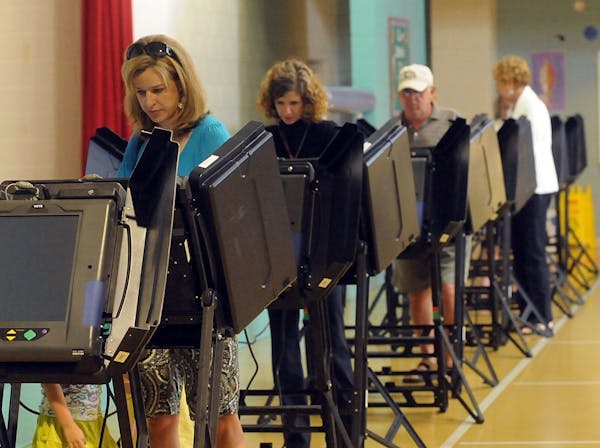Here's what Minnesota's controversial voter ID and same-sex marriage ban proposals have wrought in the last two months: three pending state Supreme Court lawsuits, one Senate hearing, and a wave of partisan wrangling and accusations. The recent developments are further proof that legislating by constitutional amendment is bad public policy.
The rancor should convince Minnesota lawmakers that they need to review the way amendments are handled. It's too easy to get them on the ballot, and there are far better ways to ensure that voters understand them.
The state was dragged into this minefield during the 2011-12 session when the GOP majority in the Legislature voted to send the two sensitive issues to the ballot. Under Minnesota law, the governor does not have the power to veto constitutional amendments, although DFL Gov. Mark Dayton opposes both 2012 ballot questions.
Last month, the League of Women Voters and other groups opposed to the voter ID amendment sued, arguing that the ballot language does not accurately reflect changes that would be made to the Constitution.
Then early this month, Secretary of State Mark Ritchie, a DFLer who opposes both proposals, chose titles that differed from the Legislature's. He contends that the titles adopted by the Legislature did not fully represent what the amendments would do. And he told the Star Tribune Editorial Board this week that state statutes assign him to prepare the one-line title that appears on the ballot.
The Legislature passed the marriage amendment with the title, "Recognition of marriage solely between one man and one woman." Ritchie opted for: "Limiting the status of marriage to opposite sex couples." On voter ID, the Legislature's title was, "Photo identification required for voting." Ritchie selected the title, "Changes to in-person & absentee voting & voter registration; provisional ballots."
In response to those changes, legislators and others who favor the original language sued, and it will be up to the state Supreme Court to determine whether Ritchie could change the titles, and whether he has done so in keeping with state law.
We'd agree that Ritchie's versions are more descriptive. But we're not satisfied that either his or the Legislature's titles for the voting amendment fairly and accurately presented the important constitutional changes it contains. It's disingenuous not to use the terms "photo ID" or "voter ID" -- the shorthand known to most potential voters.
On the ballot-question wording, the justices could order that the complete language of the amendment be provided to voters when they go to the polls.
Decisions in all of the cases are expected in the next few weeks to give election officials time to design and print the Nov. 6 ballots.
Once this mess has passed, the 2013 Legislature should revisit the constitutional-amendment process itself. Changing it would require, yes, a constitutional amendment, but reform might be worth the effort.
Most states require supermajority legislative approval for constitutional amendments, and some require that the questions appear on the ballot in two consecutive elections. And some states avoid the title squabbles by numbering amendments. Those ideas -- and any other best practices from other states -- should be on the table in Minnesota in 2013.
---------------------------
Readers, what do you think? To offer an opinion considered for publication as a letter to the editor, please fill out this form. Follow us on Twitter @StribOpinion and Facebook at facebook.com/StribOpinion.
